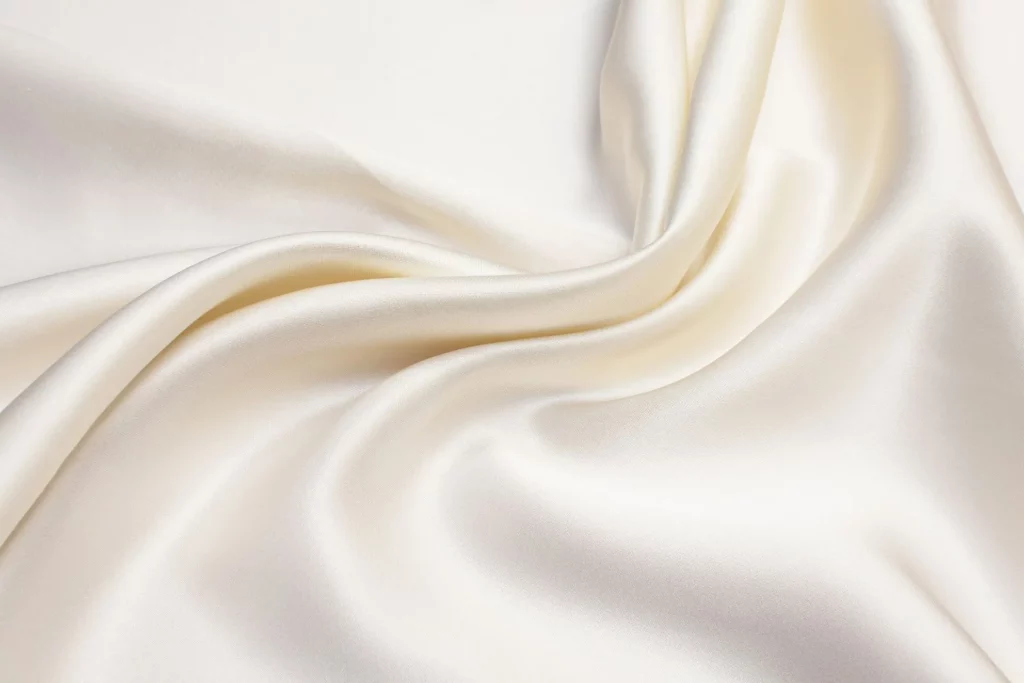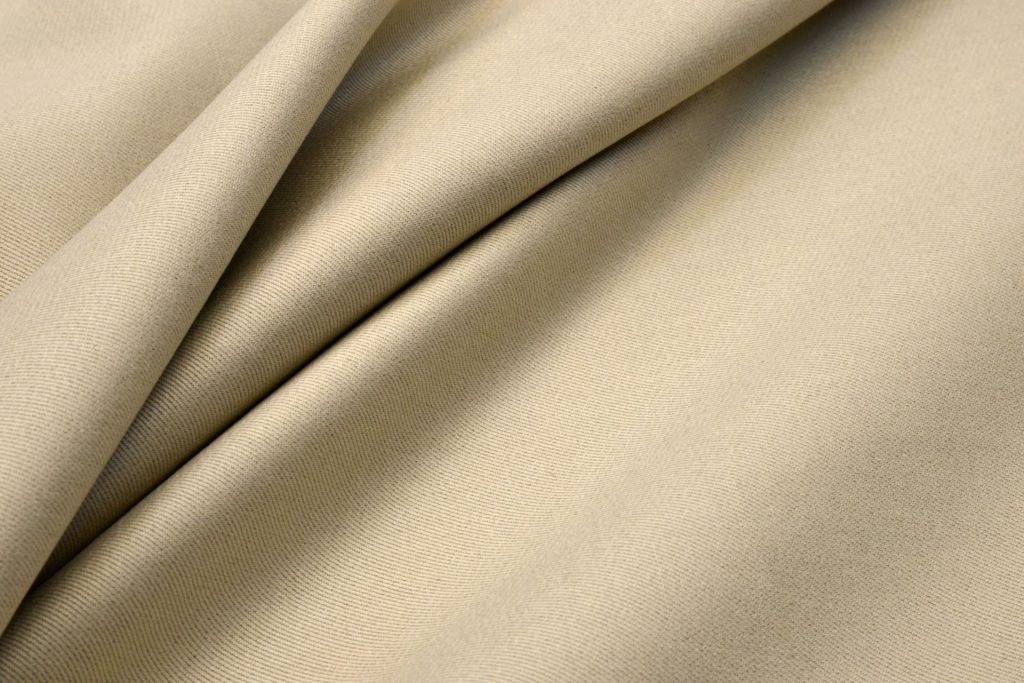Two materials stand out for their comfort, versatility, and popularity in the world of textiles: Silk and cotton. Each fabric has its own unique characteristics, making them suitable for various purposes. Let’s examine the major characteristics, advantages, and uses of silk vs. cotton, delving further into the topic of contention. Whether you are looking for luxurious bedding, stylish clothing, or cozy home textiles, understanding the differences between Silk and cotton will help you make informed decisions. Together, let’s go off on this textile adventure.
Table of Contents
Silk vs. Cotton:
Silk and cotton have notable differences in various aspects. Silk is known for its exceptional softness, insulation properties, and quick-drying nature. It has an animal origin, is hypoallergenic, anti-microbial, and provides a gentle surface for comfortable sleep.
On the other hand, the cotton is soft, highly breathable, and more affordable. It lacks Silk’s luxurious softness and insulating abilities, but it is versatile, widely available, and suitable for everyday wear. Understanding these distinctions allows for informed choices when it comes to selecting the fabric that best suits specific needs and preferences.
Origins and Production:
With its fascinating journey, Silk starts with silkworms and the harvesting of their delicate cocoons. Conversely, cotton is cultivated from the cotton plant, which yields the soft fibers used in fabric production.
The Luxurious Charm of Silk:

The Silk has been renowned for many centuries as a symbol of luxury and elegance. Derived from the cocoons of silkworms, this natural protein fiber boasts a smooth, soft texture that feels incredibly gentle against the skin. Silk is known for its lustrous appearance and ability to drape beautifully, giving garments a graceful flow.
Advantages of the Silk:
The Silk offers several advantages that contribute to its esteemed reputation in the world of textiles:
- Luxurious Softness:
Silk is renowned for its unmatched smoothness and luxurious feel against the skin. Its soft and gentle texture provides a heightened level of comfort and indulgence.
- Breathability and Temperature Regulation:
Silk is very breathable, enabling air to flow and moisture to evaporative. It is appropriate for usage all year round since it also helps to control body temperature by providing you heat in cold weather and keep you cool in the warm weather.
- Moisture Absorption:
Silk has natural moisture-wicking properties, meaning it can absorb sweat from the body while remaining dry to the touch. This feature helps keep the skin cool and dry, contributing to a comfortable and fresh feeling.
- Hypoallergenic and Anti-Microbial:
Because Silk is hypoallergenic, it is the perfect fabric for anyone with sensitive skin or allergies. Due to its resistance to mold and dust mites, the likelihood of allergic responses is lower. Additionally, Silk has inherent anti-microbial properties that inhibit the growth of bacteria, promoting cleanliness and hygiene.
- Gentle on Hair and Skin:
Silk’s smooth surface creates minimal friction against the hair and skin, reducing breakage, tangles, and wrinkles. It helps maintain the natural moisture balance of the hair and skin, preventing dryness and damage.
- Durability and Strength:
Silk is a strong and durable fabric known to retain its shape and luster over time. With proper care, silk garments and products can last for many years, making them valuable investments.
- Versatility and Elegance:
Silk is a flexible material that may be utilized for a variety of purposes, including apparel, bedding, accessories, and home decor. Its natural sheen and draping qualities exude an aura of elegance and sophistication.
- Gentle Washing:
Silk is a delicate fabric that requires gentle handling. It is recommended to hand wash silk items using mild, pH-neutral detergents specifically designed for delicate fabrics. Avoid using harsh chemicals, bleach, or enzymes that can damage the silk fibers.
- Storage Considerations:
When storing silk items, it is best to fold them and place them in a breathable fabric bag or wrap them in acid-free tissue paper. This protects them from dust, moisture, and potential damage from other garments or accessories.
These advantages collectively make silk a sought-after material, embodying both comfort and luxury in various aspects of everyday life.
Disadvantages of Silk:
- High Maintenance:
Silk requires the delicate care and is often labeled as “dry clean only.” It is prone to water spots, and improper washing can damage the fabric’s integrity. Also, the silk may wrinkle easily and must be ironed or steamed regularly.
- Cost:
The luxurious nature of the Silk is reflected in its price. It is generally more expensive than cotton, making it a premium choice for those with a higher budget.
The Versatility of Cotton:

Cotton, on the other hand, is a widely popular fabric that has stood the test of time. Known for its breathability and comfort, cotton is derived from the natural fibers of the cotton plant. It has become a staple in the fashion and textile industry due to its versatility and numerous benefits.
Advantages of Cotton:
Cotton offers several advantages as a fabric, making it a popular choice for various applications:
- Durability:
Cotton is a robust fabric that can withstand frequent washing and everyday wear. It is known for its longevity, making it a reliable option for garments and bedding that need to withstand regular use.
- Affordability:
Cotton is generally more affordable compared to Silk, making it accessible to a broader range of consumers. It provides a cost-effective solution for those seeking comfort and quality on a budget.
- Softness and Comfort:
Cotton is known for its soft and gentle feel against the skin. It is naturally breathable, allowing air circulation and keeping the body cool and comfortable.
- Breathability:
Cotton is highly breathable, allowing air to flow through the fabric, providing ventilation, and reducing the chances of sweat and moisture buildup. This makes cotton garments ideal for warm and humid climates.
- Absorbency:
Cotton has excellent moisture-absorbing properties, effectively wicking away sweat from the body. This absorbency helps keep the skin dry and can contribute to a more comfortable experience, particularly during physical activities.
- Versatility:
Cotton is a versatile fabric that can be woven or knitted into various textures, weights, and styles. It is used to make a wide range of clothing, including t-shirts, shirts, dresses, pants, and more.
- Easy to Clean:
Cotton is relatively easy to clean and maintain. It can be machine-washed, and stains can often be easily removed, making it a practical choice for everyday clothing.
- Allergy-Friendly:
Cotton is generally hypoallergenic and less likely to cause skin irritation or allergic reactions. It is often recommended for individuals with sensitive skin or allergies.
These advantages make cotton a popular choice for clothing, bedding, towels, and various household items, offering comfort, breathability, and practicality in everyday life.
Disadvantages of Cotton:
- Wrinkling:
Cotton has a tendency to wrinkle, requiring frequent ironing or steaming to maintain a crisp appearance.
- Less Lustrous:
Cotton lacks the inherent sheen and luster that Silk possesses. While this may not be a drawback for everyone, those seeking a more polished or formal look may prefer the silky finish.
Comparison in Different Applications:

When it comes to clothing, Silk showcases its elegance and durability, often used in luxurious dresses and formal attire. With its versatility, cotton offers comfort and style in a wide range of garments, from t-shirts to casual wear. In terms of bedding, Silk’s smooth texture benefits hair and skin health, while cotton provides breathability and a cozy feel. Moreover, both fabrics find their place in home textiles, with silk lending a touch of sophistication and cotton offering practicality.
Bed Sheets: Silk vs. Cotton
When it comes to bed sheets, the choice between Silk and cotton depends on personal preferences and needs. Silk bed sheets offer a luxurious and smooth feel, excellent for those who prioritize comfort and enjoy a touch of luxury. Silk is also known for its natural temperature-regulating properties, making it suitable for both warm and cool sleepers.
Additionally, Silk is hypoallergenic and gentle on the skin, making it an excellent choice for those with allergies or sensitive skin. On the other hand, cotton bed sheets are highly breathable, affordable, and widely available in various styles and thread counts.
Cotton sheets are known for their durability, easy care, and versatility. They provide a variety of alternatives to suit different tastes and deliver a cozy and pleasant sleeping experience. Ultimately, the best choice between silk and cotton bed sheets depends on personal comfort preferences, budget, and desired features.
Pillowcase: Silk vs Cotton
The choice between silk and cotton pillowcases ultimately depends on the personal preferences and desired qualities. Silk pillowcases are known for their smoothness, which can be gentle on the skin and hair. They are also hypoallergenic and help minimize friction, reducing the chances of hair breakage and wrinkles. Additionally, Silk has natural temperature-regulating properties, making it suitable for different seasons.
On the other hand, cotton pillowcases offer breathability and are generally more affordable. They are widely available and easy to care for. Cotton also absorbs moisture well, making it a good option for those who sweat during sleep. Ultimately, the best choice for pillowcases comes down to individual comfort preferences, skin sensitivities, and budget considerations.
Comparison Table of Silk and Cotton:
| Properties | Silk | Cotton |
|---|---|---|
| Softness | Excellent | Very good |
| Insulation | Great | Moderate |
| Breathability | Good | Excellent |
| Drying time | Quick | Moderate |
| Origin | Silkworms | Cotton Plant |
| Hypoallergenic | Yes | No |
| Antimicrobial | Yes | No |
| Sleep Comfort | Gentle and Smooth | Comfortable |
| Price | Expensive | Affordable |
| Usage | Luxury Clothing, Bedding, and Accessories | Everyday Clothing, Bedding, and Household Items |
Frequently Asked Questions:
What are the advantages of Silk over cotton?
Silk offers several advantages over cotton, including its exceptional softness, insulating properties, moisture-wicking capabilities, hypoallergenic and anti-microbial nature, and quick-drying attributes. It is also known for its elegance and suitability for special occasions.
Is Silk or cotton better for hot climates?
Both Silk and cotton can be suitable for hot climates, but cotton’s superior breathability and moisture-absorbing properties make it a popular choice to keep cool in warm weather.
Can Silk be used for everyday clothing like cotton?
Silk can certainly be used for everyday clothing, but it is often associated with more luxurious and special occasions due to its elegant appearance and higher cost compared to cotton. Cotton, being more versatile and affordable, is commonly used for everyday wear.
Which fabric is better for sensitive skin: Silk or cotton?
Silk is often recommended for sensitive skin due to its hypoallergenic and gentle nature. However, individual sensitivities may vary, and some people with sensitive skin may also find cotton to be suitable and comfortable.
What are the differences in care and maintenance for Silk and cotton?
Silk typically requires more delicate care, often needing to be hand-washed or machine washed on a gentle cycle with mild detergent. Cotton, on the other hand, is relatively easy to care for and can be machine washed and dried on a regular cycle.
Final Thought:
Silk offers luxurious softness and elegance, perfect for special occasions, while cotton provides comfort, breathability, and versatility for everyday wear. The choice between the two fabrics depends on factors such as individual comfort, climate, sustainability concerns, and budget. Embrace the diversity and richness of options available, finding the perfect fabric that suits your unique preferences and lifestyle. Whether it is the silky smoothness of Silk or the cozy comfort of cotton, both fabrics have their place in our lives, adding beauty and functionality to our wardrobes and surroundings.

